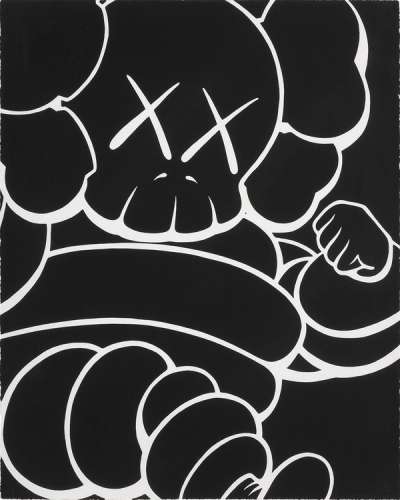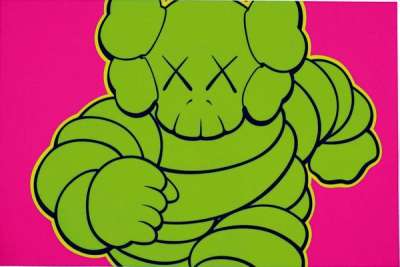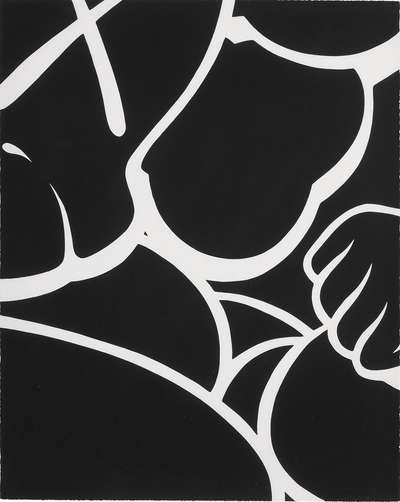
Chum Vs Astroboy

Chum Vs Astroboy
Signed Print
KAWS
£5,500-£8,000Value Indicator
$11,500-$17,000 Value Indicator
$10,000-$14,500 Value Indicator
¥50,000-¥80,000 Value Indicator
€6,500-€9,500 Value Indicator
$60,000-$80,000 Value Indicator
¥1,040,000-¥1,510,000 Value Indicator
$7,000-$10,500 Value Indicator
AAGR (5 years) This estimate blends recent public auction records with our own private sale data and network demand.
There aren't enough data points on this work for a comprehensive result. Please speak to a specialist by making an enquiry.
Medium: Screenprint
Edition size: 50
Year: 2002
Size: H 90cm x W 64cm
Signed: Yes
Format: Signed Print
TradingFloor
Track this artwork in realtime
Watch artwork, manage valuations, track your portfolio and return against your collection
Track auction value trend
Auction Results
| Auction Date | Auction House | Location | Hammer Price | Return to Seller | Buyer Paid |
|---|---|---|---|---|---|
| March 2020 | Tate Ward Auctions | United Kingdom | |||
| May 2016 | Bonhams Hong Kong | Hong Kong | |||
| October 2008 | Phillips New York | United States |
Meaning & Analysis
In this work KAWS pits his Chum character – a kind of Michelin Man with skull and crossbones for a head and XX eyes – against the smaller Astroboy, a Japanese manga character originally created by Osamu Tezuka. As contemporary art specialist Noah Davis has said, “No cartoon is safe from being consumed and turned into KAWS” but it is important to note here that the figure of Astroboy is remarkable in that his eyes remain round, without the KAWS trademark X, unlike the artist’s other interpretations of the character. With one foot on the weaker boy’s neck, Chum comes across as a dominating figure though his expression and stance appear to be more curious than threatening.
Depicted in simple white lines on a black background this scene is reminiscent of early animation sketches or even Keith Haring’s subway drawings, executed by the late Pop artist in chalk. KAWS made his name in a similar way to Haring, doctoring advertising panels he found in the bus stops and phone booths of Manhattan to introduce a wider audience to his uncanny cast of characters and eschewing the traditional art school to gallery trajectory. Speaking of his beginnings as a street artist KAWS has said “When I was doing graffiti, my whole thought was, ‘I just want to exist.’ I want to exist with this visual language in the world… It meant nothing to me to make paintings if I wasn’t reaching people.” This desire to reach people is evident in works such as these where KAWS adopts well-loved figures and presents them in a new way, ensuring his work stays fresh for both new and older audiences alike.
His method of working often with editions – through his Companion toys as well as his series of screen prints – is representative of his savvy understanding of the current art market and also recalls the repetitive techniques involved in the making of cartoons. Originally adopted from the world of commercial printing, screen printing – or serigraphy as it is also known – was first adopted for the purposes of fine art by Andy Warhol in the 60s. His large scale prints of iconic faces – from Marilyn Monroe to Elvis via Chairman Mao – soon made him as famous as his subjects as well as incredibly influential to future generations of artists. The process involves exposing an image onto a silk screen which can then be inked hundreds of times to create a multi layered work. The process lends itself well to KAWS’ work and while in Chum vs Astroboy the artist has chosen a monochrome palette, giving this deceivingly simple print the impression of a lithograph or drawing, elsewhere in his editions he pushes the possibilities of the medium to the max.



